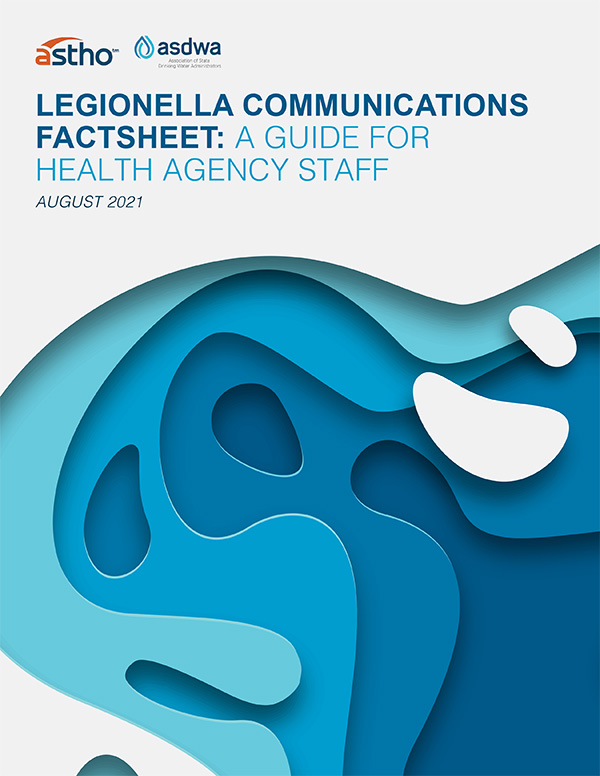Legionella Communications Factsheet: A Guide for Health Agency Staff
August 16, 2021
 Legionella is a type of bacteria found naturally in freshwater environments at generally low levels. It can become a health problem when its presence is amplified in building water systems, especially large, complex water systems such as those found in hotels, hospitals, and office buildings. When Legionella grows in the biofilm of premise plumbing and is aerosolized through devices such as showers, cooling towers, hot tubs, or fountains, people can breathe in small water droplets containing the bacteria. Inhalation of Legionella may result in a severe form of pneumonia known as Legionnaires’ disease, or in milder Pontiac fever. Legionella is the leading cause of waterborne disease outbreaks associated with drinking water in the United States.
Legionella is a type of bacteria found naturally in freshwater environments at generally low levels. It can become a health problem when its presence is amplified in building water systems, especially large, complex water systems such as those found in hotels, hospitals, and office buildings. When Legionella grows in the biofilm of premise plumbing and is aerosolized through devices such as showers, cooling towers, hot tubs, or fountains, people can breathe in small water droplets containing the bacteria. Inhalation of Legionella may result in a severe form of pneumonia known as Legionnaires’ disease, or in milder Pontiac fever. Legionella is the leading cause of waterborne disease outbreaks associated with drinking water in the United States.
Control of Legionella and other plumbing pathogens is complicated and is a shared responsibility between water utilities, high-risk individuals, and commercial, industrial, institutional, and residential customers. Each of these partners has a role in reducing occurrence of and exposure to Legionella.
The goal of this resource is to:
- Provide information that state health agency staff can use when talking to building and facility personnel about Legionella and other opportunistic biofilm pathogens.
- Provide information to increase building owner awareness of the potential for pathogens to grow in building water systems, including resources that can help them reduce or minimize pathogen growth in their plumbing.
- Outline proactive Legionella-related communications methods for state agencies to consider.